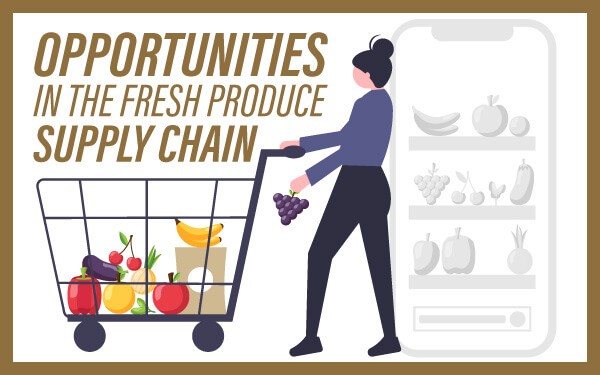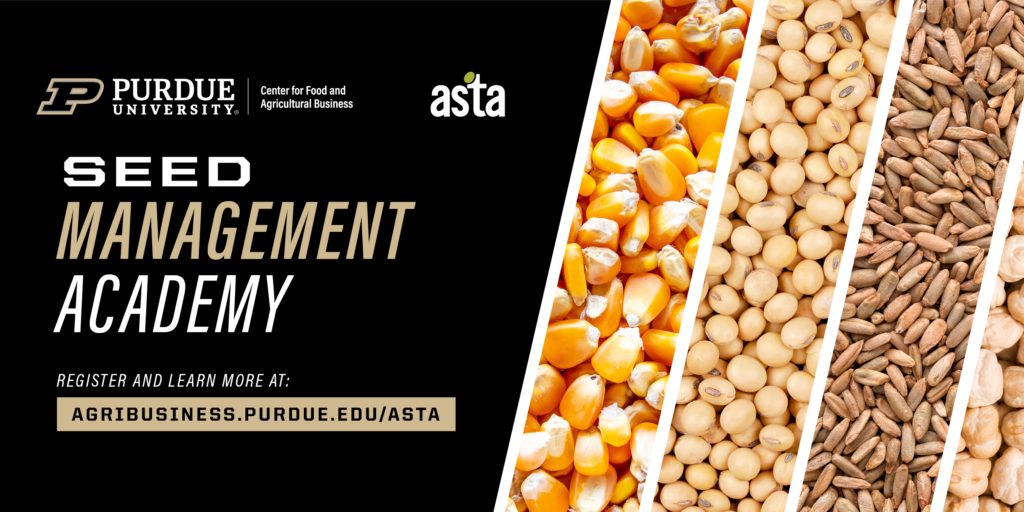We watched as 2020 unleashed volatility on our food and agribusiness supply chains. In the fresh produce supply chain, disruptions impacted the seed industry, growers, shippers, wholesalers and retailers. While consumer behaviors and preferences also shifted during this time, shoppers continued to place importance on choosing grocery stores based on the availability of fresh foods — especially high-quality fruits and vegetables.
Recently, Dr. Allan Gray, executive director of Purdue University’s Center for Food and Agricultural Business and professor of agricultural economics, had the opportunity to speak with Jason Fuller and Randy Riley, co-owners of GoldenSun Insights, about challenges, opportunities, consumer trends and new technologies in the fresh produce market as a result of the past twelve months. GoldenSun Insights was founded on a deep understanding of what drives retail produce operations. Using this knowledge, GoldenSun supports clients in crafting solutions that elevate products and services beyond commodities to value-added positioning for retailers.
*Fuller and Riley will also be attending the 2021 Purdue Food and Agribusiness Executive Summit September 28-30 to discuss opportunities — post crisis — in the fresh produce supply chain. To provide a further enriching perspective, players from along the supply chain rising to these opportunities will also join them for the discussion.
Gray: Over the last year, the concepts of communication, distance, work, food and even shopping have been redefined. In the food and agricultural business world, this has resulted in the examination of many aspects of business from the design of supply chains to impacts on consumer buying behaviors to the future of international trade. As GoldenSun Insights works with stakeholders in the fresh produce supply chain from seed to retail, what problems or challenges have been encountered by this supply chain during the COVID crisis?
Fuller: We have all seen consumer interest in online shopping grow immensely over the past year. Online retailers have been faced with the challenge of creating a shopping experience that mimics brick-and-mortar stores. For example, consumers are used to getting instant gratification when they physically purchase a product in stores. Therefore, e-commerce retailers need to use impulsive buying motivators such as conditional free shipping or sales and promotion to simulate this effect.
Another thing that stands out to us is grocery retailers’ focus on market share. In tactical terms, this means they could focus more on price. One example might be retailers featuring hot “loss leaders” at an accelerated pace on front-page ads, which will likely put pressure on the supply chain for lower costs to reach aggressive price points.
Gray: Out of adversity comes opportunities. What are the opportunities for stakeholders in the fresh produce supply chain?
Riley: While working with our clients, we’ve had first-hand experience with the effects of COVID-19 on the supplier and consumer shopping experience. This past year, we have seen e-commerce, food and beverage sales skyrocket to around the $15 billion mark. COVID-19 was a huge factor in this tremendous growth because of the vast influx of consumers new to online grocery shopping. In our experience, we expect the shift in consumers’ buying habits to continue post-pandemic. We know online e-commerce platforms and brands have the opportunity to capitalize on online grocery shopping by developing a digital strategy that helps them engage with the consumer. Suppliers also have the opportunity to become even more integrated with retailers and form deeper partnerships that will give them a greater sense of surety of supply.
Gray: There is a great deal in the press about changing consumer buying behaviors. How are these trends impacting the supply chain?
Riley: Industry trends have indicated that consumers are gravitating towards packaged produce. Our research has also found that consumers prefer brands that practice sustainability at every level of the supply chain. This has challenged brands to create environmentally friendly packaging, because consumers’ expectations for brands are higher than ever before. Suppliers have to continuously shift their practices in order to stay aligned with consumer and retailer needs.
Gray: Jason, you believe technology is offering great tools that will bring solutions to the fresh produce market. Can you provide an example of a technology that may help stakeholders across the value chain solve challenges?
Fuller: Post-harvest technology, controlled environment agriculture and advanced robotics are all big topics in the industry now. As tech investors know well, being first is not always best. We foresee an evolution in this space that will help guide and define fresh product in the future. In doing research for our clients, we found that approximately 1 trillion dollars are lost worldwide each year due to food waste. We know that pre-harvest, post-harvest and storage technologies such as coatings and biopesticides can be utilized to lengthen the shelf-life of produce at the farm level. Investing in shelf-life technology is just one of the many ways stakeholders can help reduce food waste in the supply chain. We’ve seen the demand for a solution to reduced food loss grow over the years, which is why we see more interest in post-harvest technology.
Learn more from Jason Fuller and Randy Riley at the Purdue Food and Agribusiness Executive Summit September 28-30, 2021. This Summit will provide senior level leaders the opportunity to network with peers and engage in a series of case studies, company discussions and special topics based on current issues in our supply chain and marketplace that have been accelerated by the current crisis. Prepare yourself for the conversations to come in your board room by applying to take part in the 2021 Summit.
If the Summit isn’t for you, check out our other upcoming professional development workshops. Click here for more information and find a program right for you.
:




